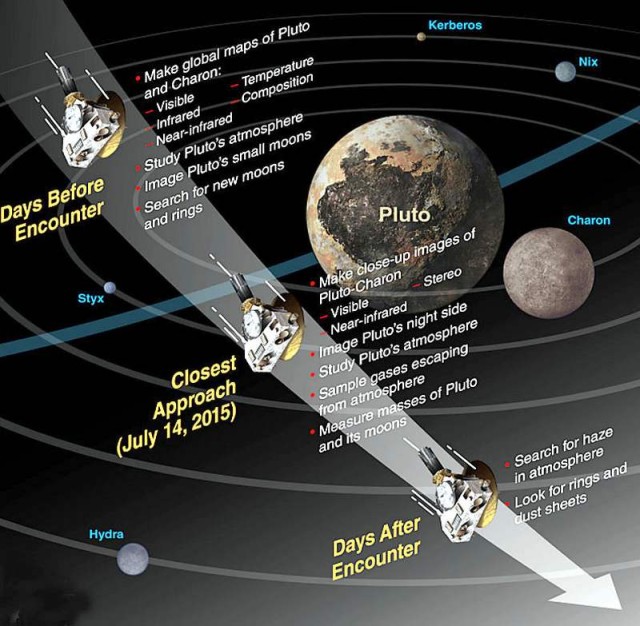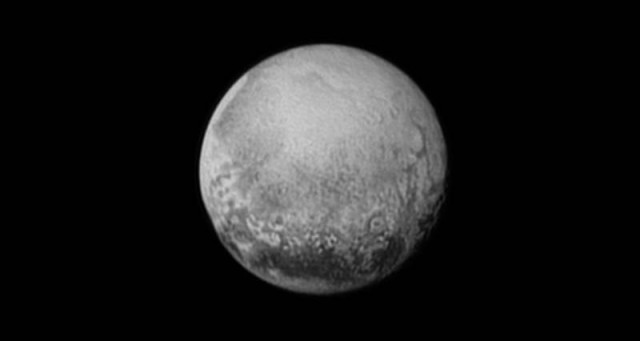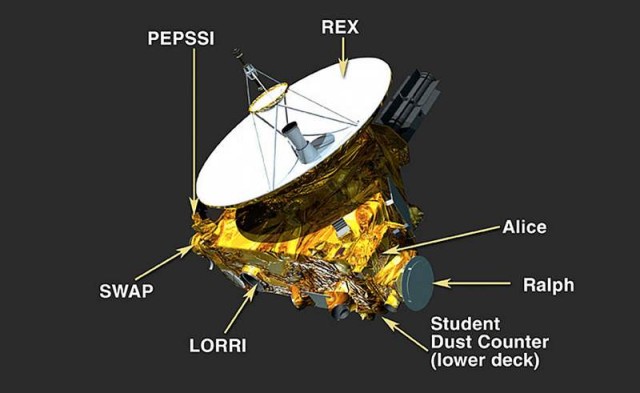With the speed of 30,800 miles per hour, New Horizons spacecraft will pass by Pluto tomorrow, offering us for the first time, unique images of the distant planet in our Solar System. Stay tuned!
Above: Graphic showing New Horizons’ busy schedule before and during the flyby. Credit: NASA
Top image: For the first time on Pluto, this view reveals linear features that may be cliffs, as well as a circular feature that could be an impact crater. Rotating into view is the bright heart-shaped feature that will be seen in more detail during New Horizons’ closest approach on July 14. The annotated version includes a diagram indicating Pluto’s north pole, equator, and central meridian. Credits: NASA/JHUAPL/SWRI
Newest view of Pluto seen from New Horizons on July 11, 2015 shows a world that continues to grow more fascinating and look stranger every day. See annotated version below. Credits: NASA/JHUAPL/SWRI
Instruments New Horizons will use to characterize Pluto are REX (atmospheric composition and temperature); PEPSSI (composition of plasma escaping Pluto’s atmosphere); SWAP (solar wind studies); LORRI (close up camera for mapping, geological data); Star Dust Counter (student experiment measuring space dust during the voyage); Ralph (visible and IR imager/spectrometer for surface composition and thermal maps) and Alice (composition of atmosphere and search for atmosphere around Charon). Credit: NASA/Johns Hopkins University Applied Physics Laboratory/Southwest Research Institute
Live coverage on NASA TV, its website and social media.








Leave A Comment